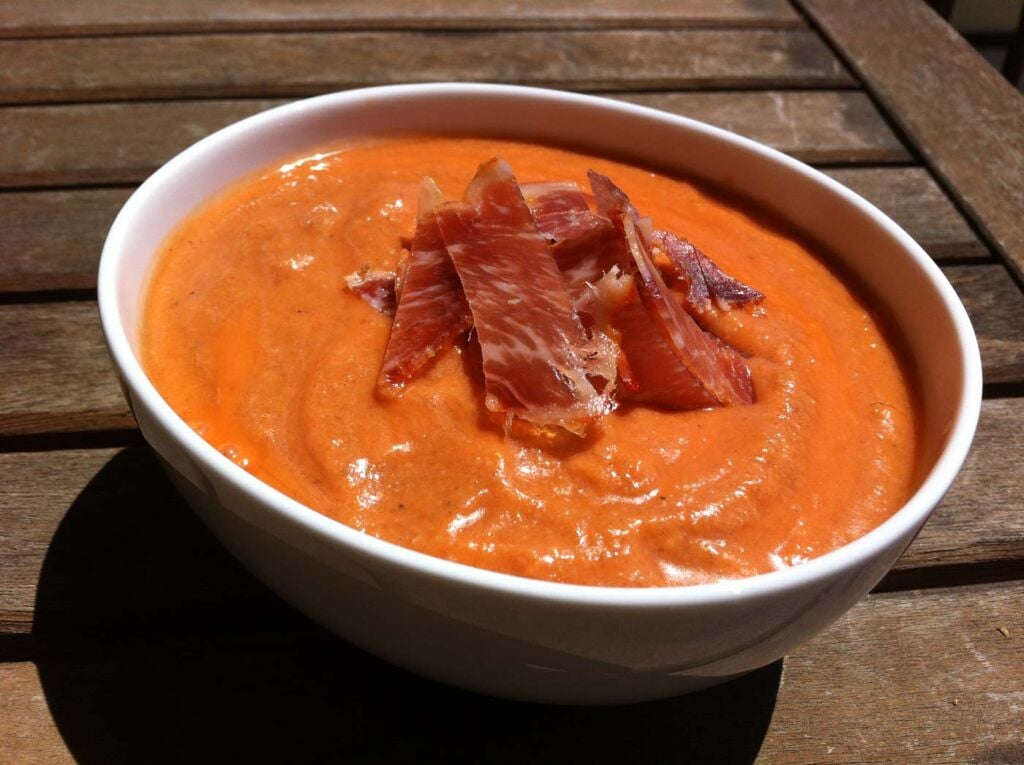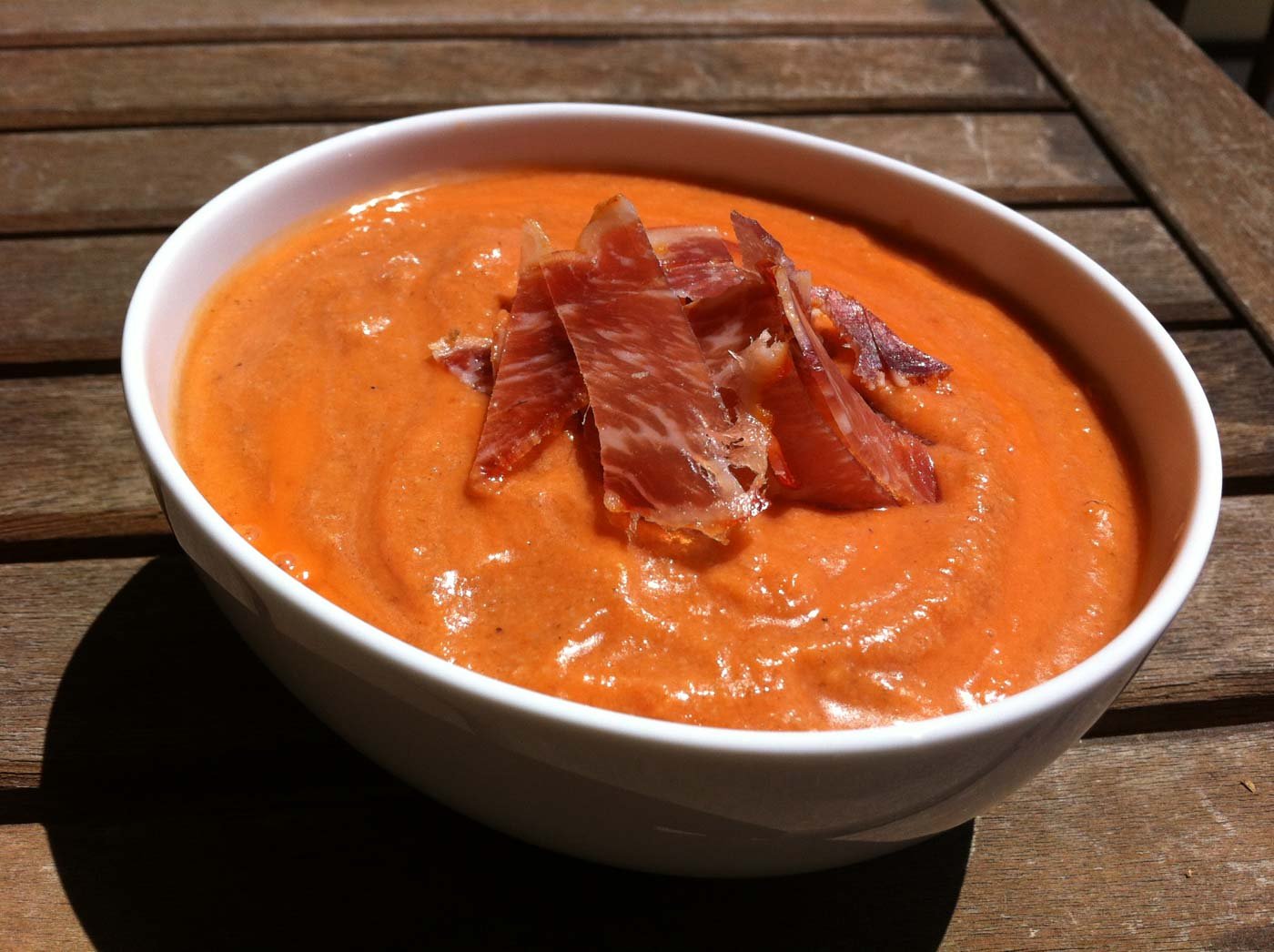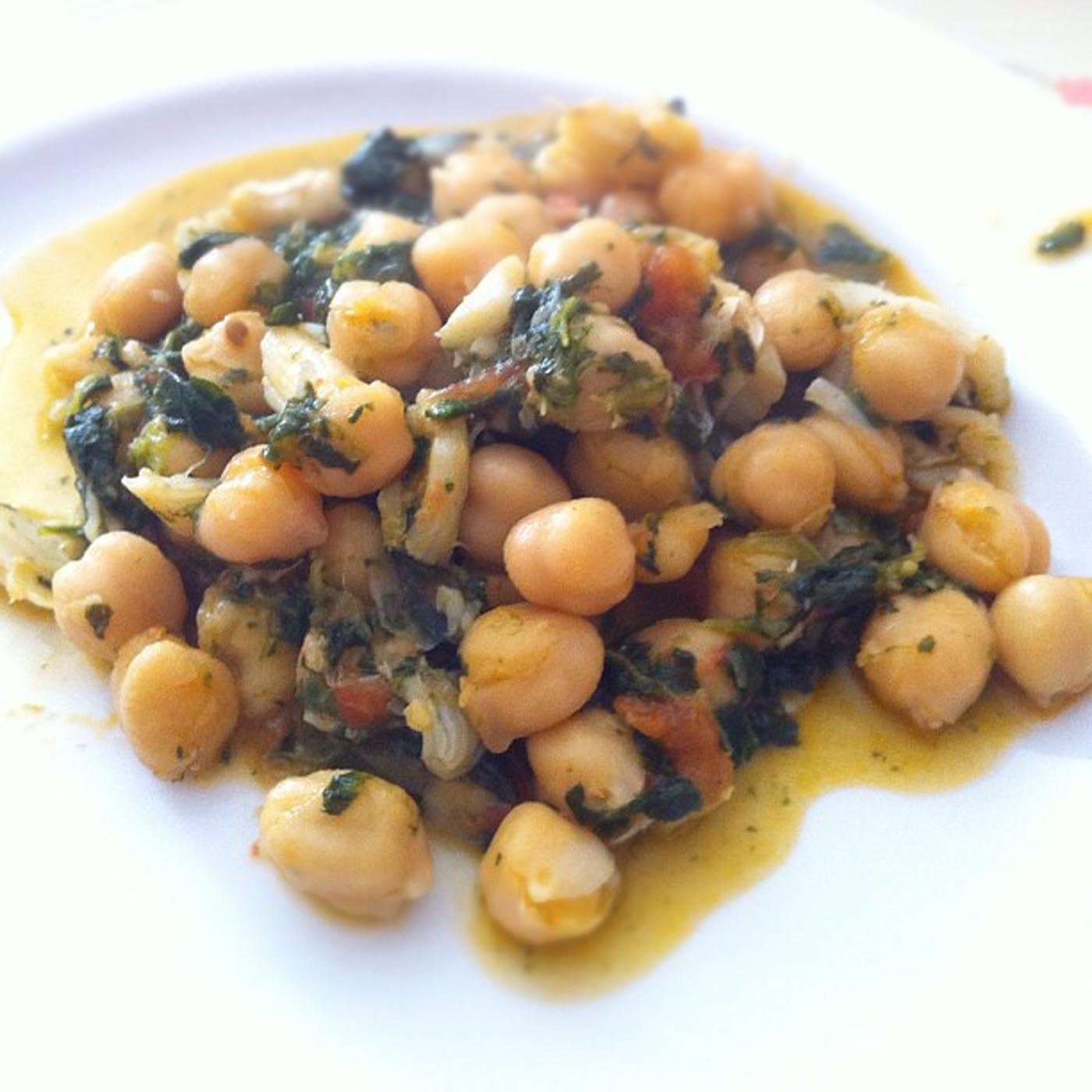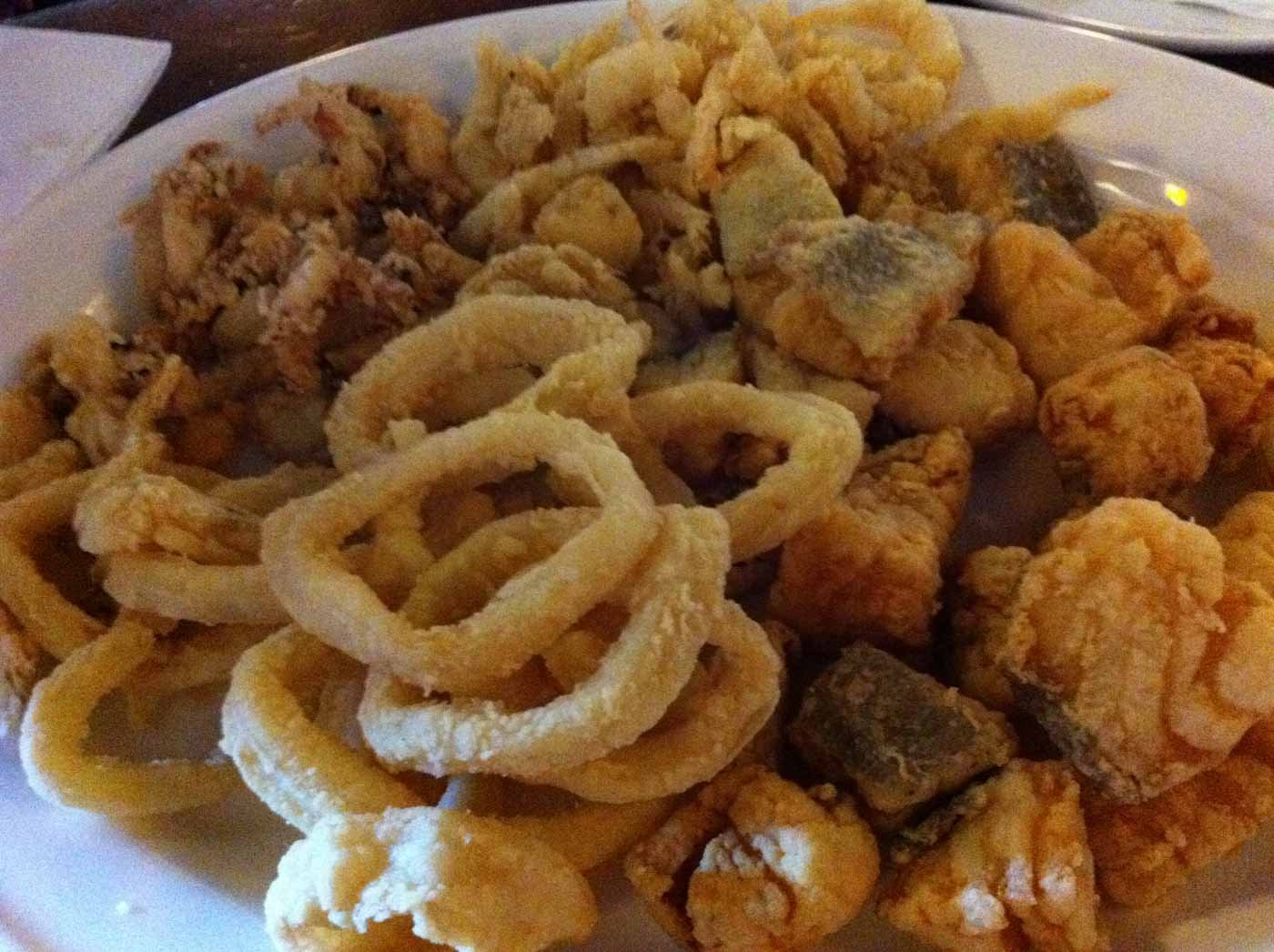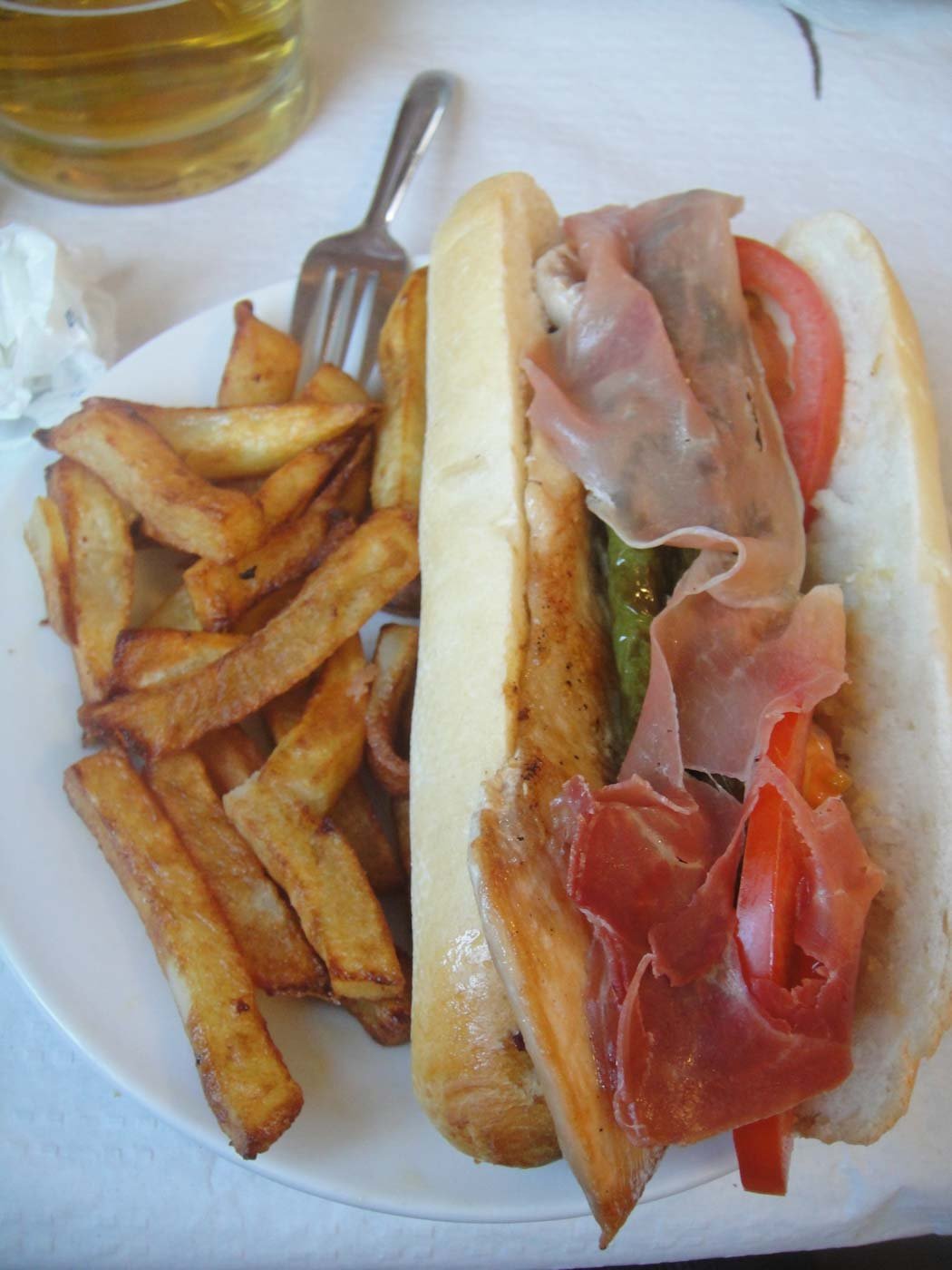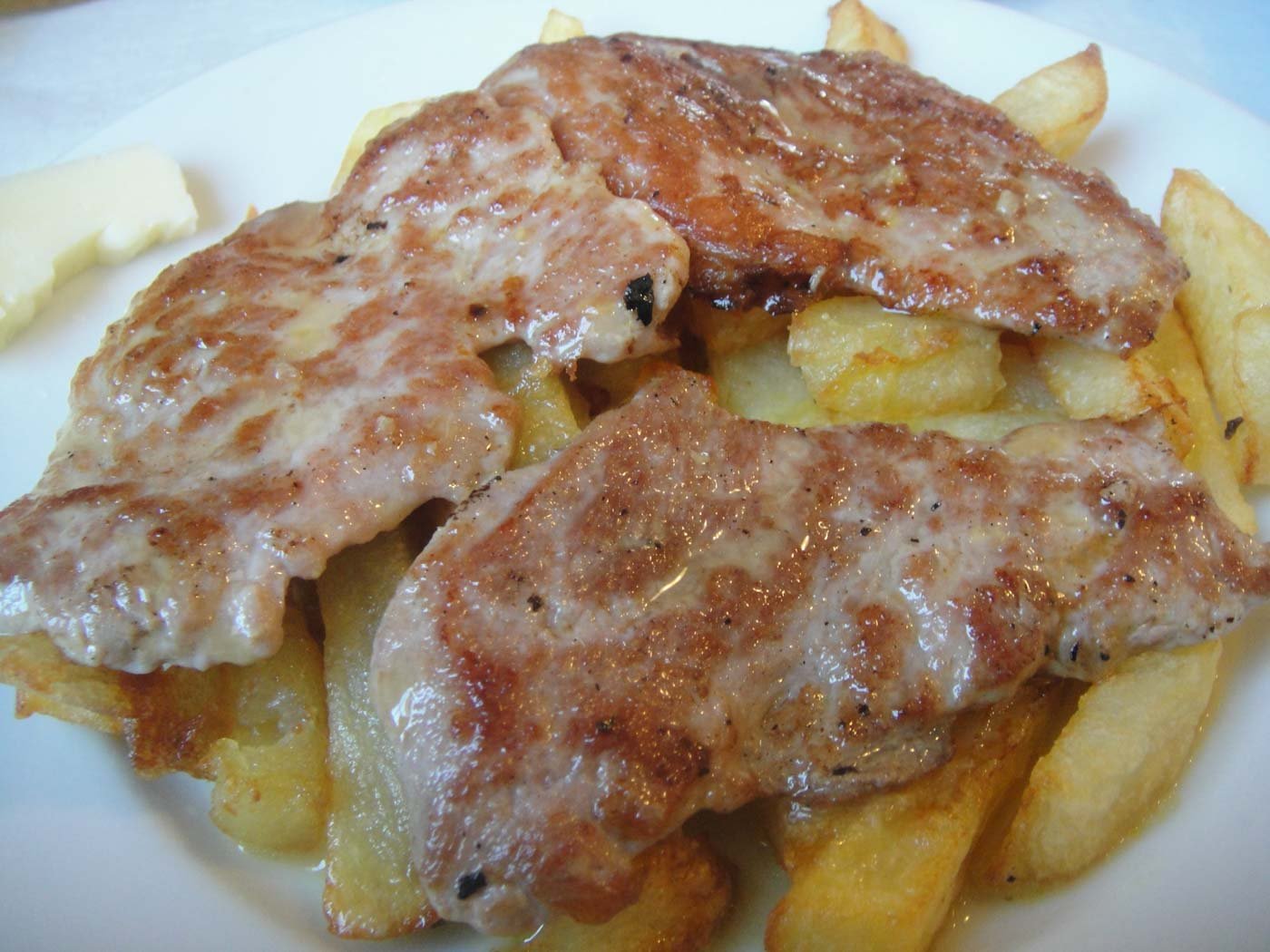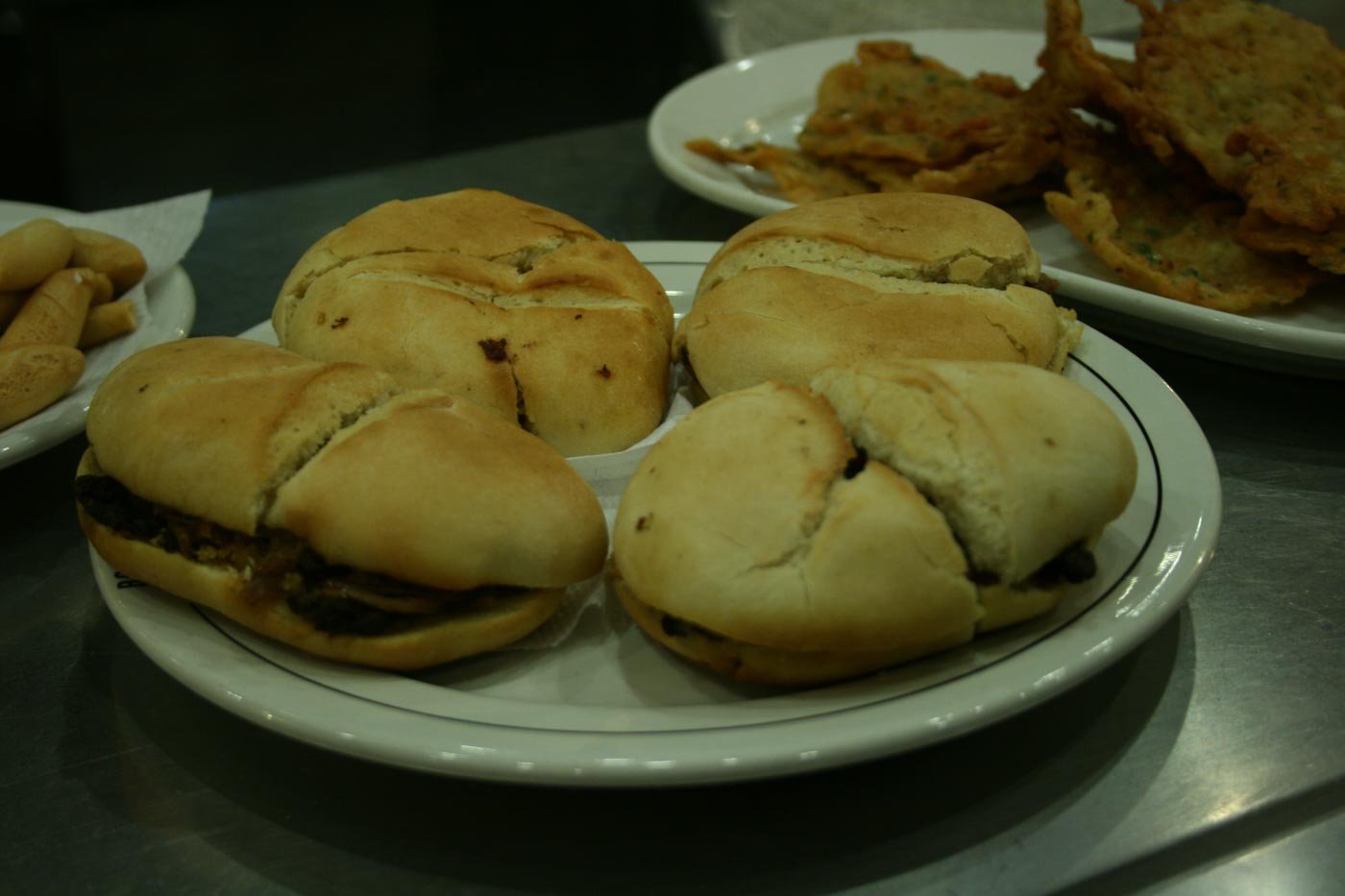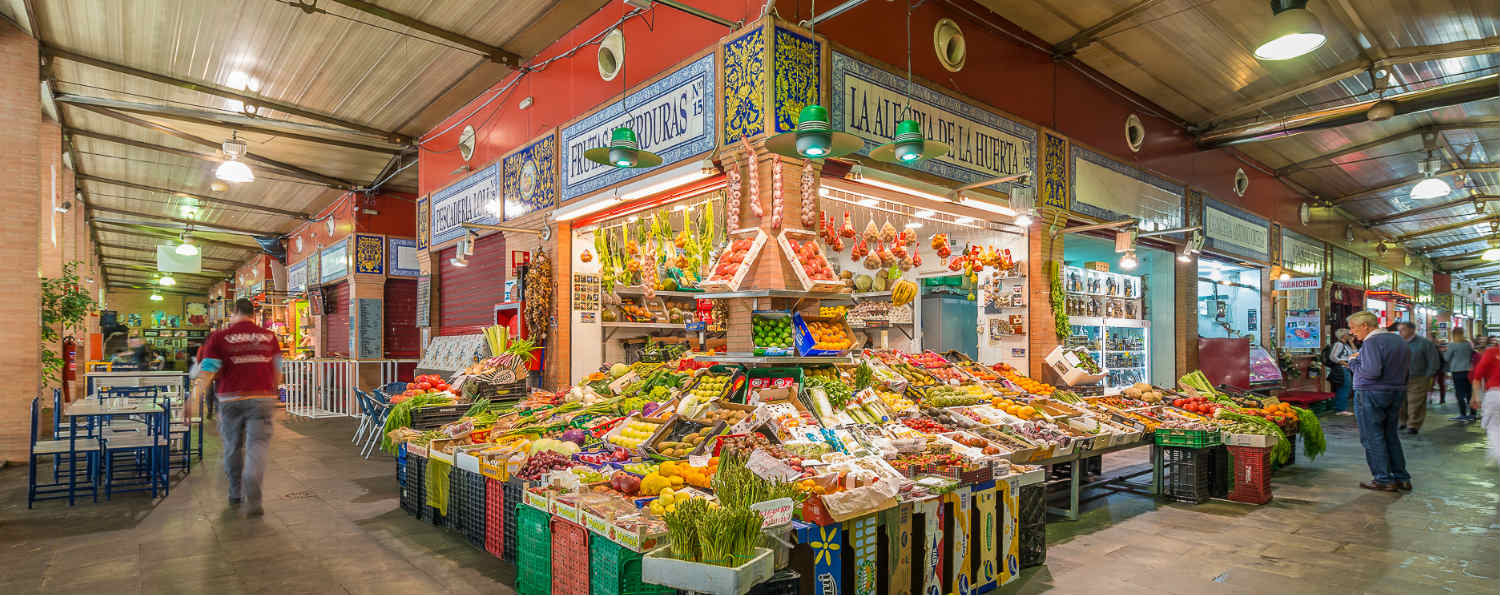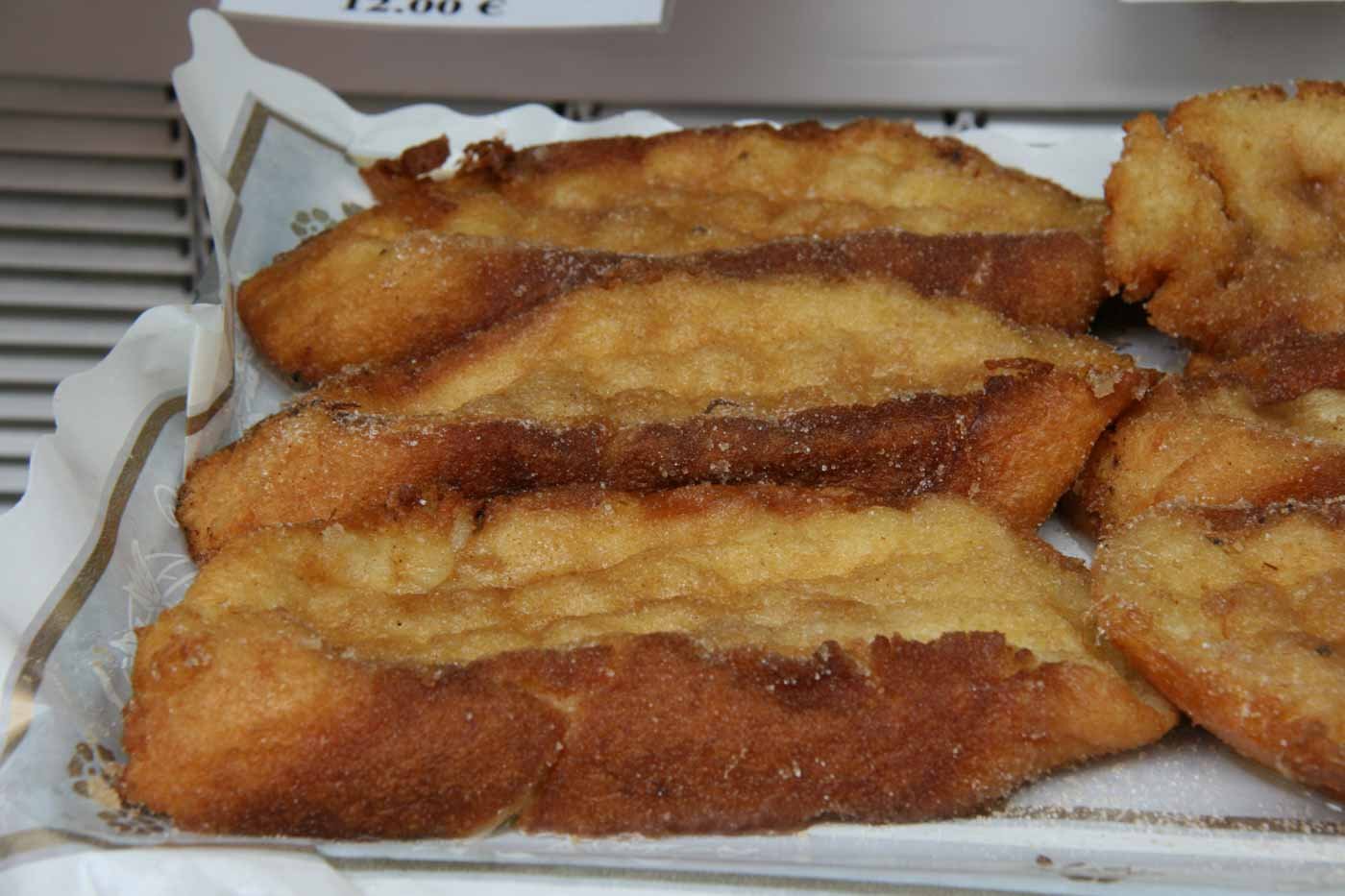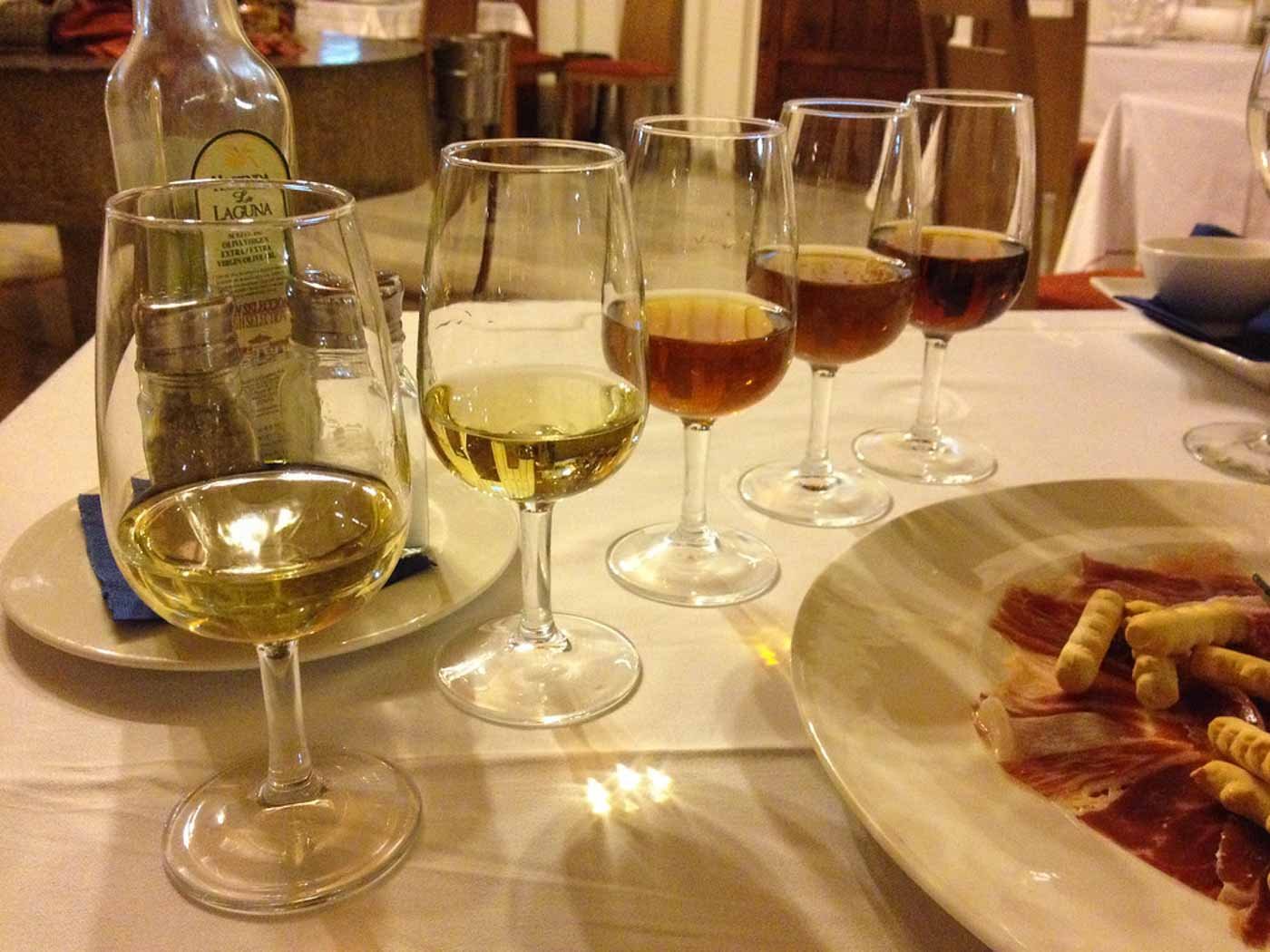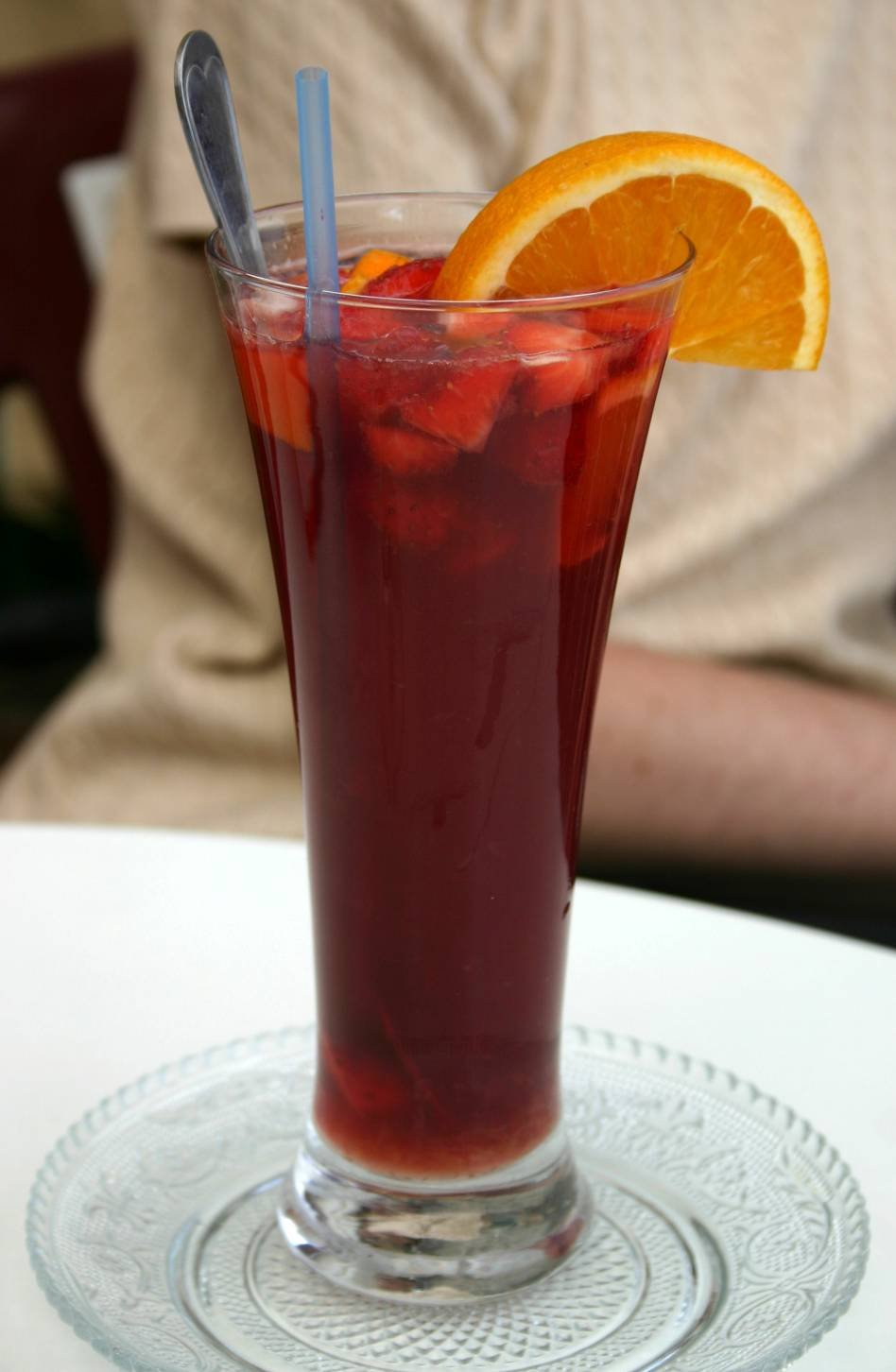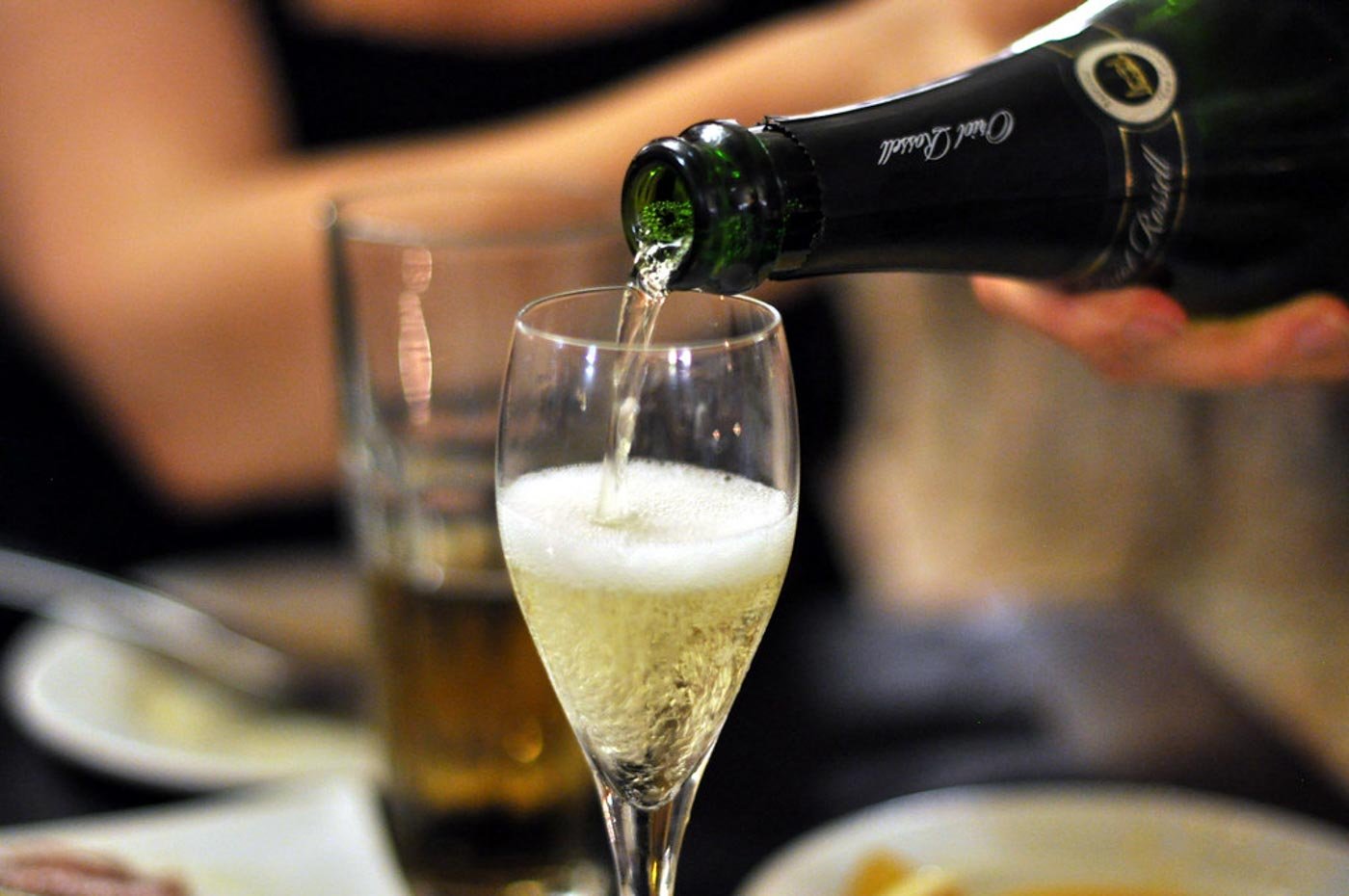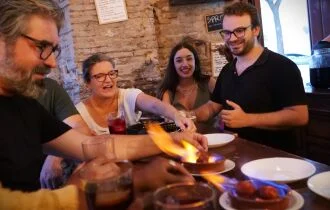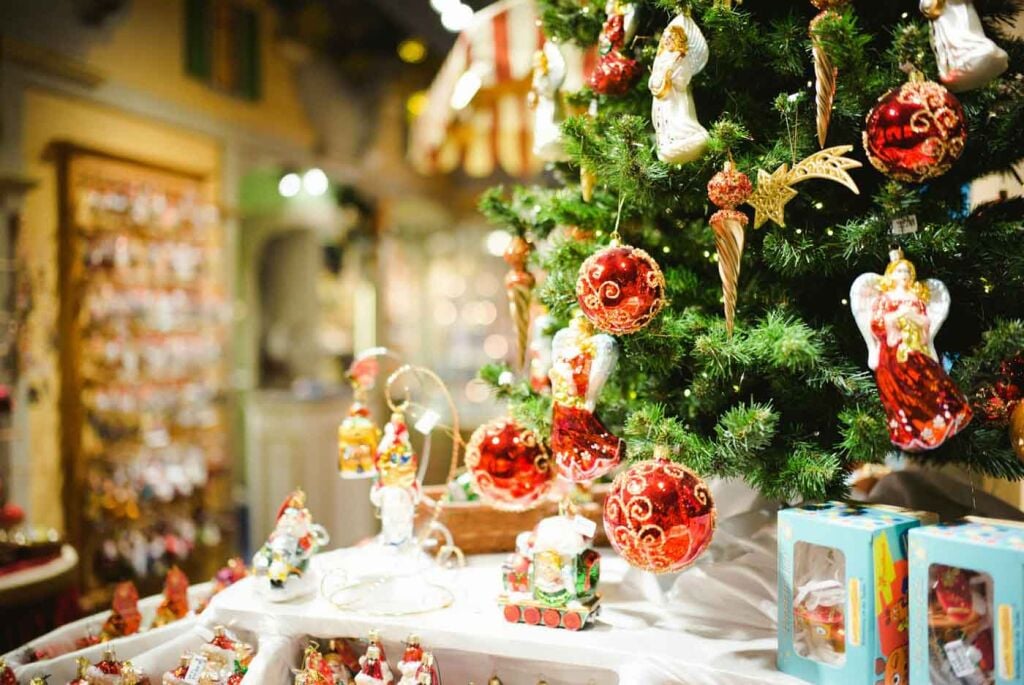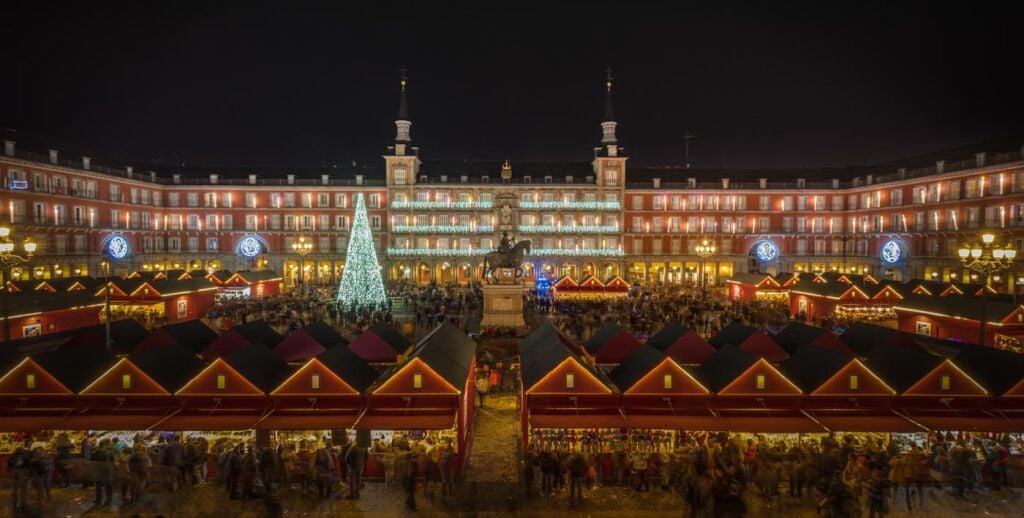For foodies, Seville is a culinary treasure trove where centuries of Moorish, Mediterranean, and Spanish influences combine to create a vibrant, flavorful cuisine. From sizzling tapas and sweet, orange-infused desserts to late-night flamenco feasts, the city offers a sensory journey through Andalusian food culture.
After falling in love with Seville’s food culture, I thought I’d walk you through the must-try dishes, and local specialties to elevate an ultimate Spain food tour.
Traditional Dishes of Seville
Seville has several iconic and traditional dishes that help define the city’s culinary identity.
Photo credit: Wikimedia Commons licensed under CC0 1.0 Universal (no changes made)
Salmorejo is a thick, creamy chilled tomato soup that is richer than gazpacho and typically topped with hard-boiled egg and jamón.
Photo credit: Demi licensed under Attribution 2.0 Generic (no changes made)
Spinach with Chickpeas is a type of Moorish-inspired tapa that blends earthy chickpeas with tender spinach, garlic and smoked paprika. The smoked paprika really stands out in this seemingly humble dish and isn’t the simple red dust you might be used to.
Photo credit: Wikimedia Commons licensed under Attribution 2.0 Generic (no changes made)
Pescaíto Frito is a beloved Andalusian staple of lightly battered, crispy fried seafood, often served with lemon wedges. The type of seafood used varies depending on what’s fresh and best. Usually anchovies (boquerones), hake (merluza), cod, cuttlefish (choco), and squid.
Photo credit: Wikimedia Commons licensed under Attribution-ShareAlike 3.0 Unported (no changes made)
Serranito is a hearty sandwich made with grilled pork loin, jamón, green pepper, and sometimes tomato or omelet, served with crusty bread.
Photo credit: Wikimedia Commons licensed under Attribution-ShareAlike 3.0 Unported (no changes made)
Solomillo al Whiskey is a succulently tender pork sirloin bathed in a bold, garlicky whiskey sauce that’s uniquely Sevillian.
Photo credit: Wikimedia Commons licensed under Attribution 3.0 Unported (no changes made)
Pringá is a savory, slow-cooked meat spread made from pork, chorizo, and morcilla, traditionally eaten inside crusty bread. You often find it in food markets and taverns throughout Seville.
Tapas Culture in Seville
The tapa in Seville helps define the culinary scene and social culture. Rooted in Andalusian tradition, Sevillian tapas began as small bites served with drinks to cover (tapar) their glasses at bars to keep bugs from getting into their drinks. Over time it evolved into a cherished social snack ritual.
Popular tapa dishes you’ll find in Seville can vary from one bar or bodega to the next. Some of the more popular options like montaditos are served as individually portioned bite-side small sandwiches. Whereas raciones are served as larger plates that are meant to be shared with everyone at the table.
How to Order Tapas Like a Local in Seville
In Seville, locals often stand at the bar, and order a few tapas at a time. Some will move between taverns, turning dinner into a relaxed, flavorful crawl through the city. This is a common habit for someone making their slow way home or back to their hotel, stopping off for tapas and a drink as they get closer.
The key to enjoying tapas culture in Seville is not to rush. Embrace the city’s casual pace, and try a mix of hot and cold dishes. Try to visit local taverns where you’ll get authentic Andalusian tapas, rather than tourist bars that serve basic crowd-pleasing tapas.
Food Markets and Shopping
Seville has several food markets and culinary hot spots that will give you an authentic taste of the local Andalusian cuisine.
Photo credit: Mercado de Triana
Mercado de Triana is one of Seville’s most iconic markets. Here, you’ll find a sensory feast of gleaming fresh fish, vibrant spices, and some of the region’s finest Andalusian olive oils.
I think the secret gem here is to find some local smoked paprika, which is a popular seasoning in Seville and is much more pungent than the paprika you find elsewhere. If oranges are in season, it’s pretty much obligatory to pick a few up at Mercado de Triana.
Across the city, specialty shops cater to lovers of local flavors, offering everything from hand-carved jamón ibérico to seasonal fruits, vegetables, and artisanal cheeses from nearby mountain villages. These family-run shops are often hidden gems where passionate vendors share tastings and stories behind their products.
For a quick taste of Seville on the go, explore the street food and small bites found throughout shopping districts like Calle Sierpes or Plaza del Duque. You’ll spot vendors selling everything from warm churros and roasted nuts to savory empanadas and bocadillos.
It’s best to visit these markets in the morning when they offer the freshest selections. Watch where the locals go and avoid tourist hot spots.
Sweets and Desserts
Just when I thought the food scene in Seville couldn’t get any better, I switched gears from savory to sweet and fell in love with the local Andalusian desserts.
Convent sweets are handmade delicacies crafted by nuns in centuries-old convents, using recipes passed down through generations. They use seemingly basic local ingredients like almonds, egg yolks, and honey that let you taste the terroir of Andalusia. I was also impressed by the idea that I was tasting something exactly the way that someone else did a century or three ago!
Photo credit: Wikimedia Commons licensed under Attribution-ShareAlike 3.0 Unported (no changes made)
Torrijas are often enjoyed around Easter, as an Andalusian take on French bread. It’s slices of bread soaked in an egg and milk custard mixture. Then fried and dusted with sugar and cinnamon.
Dark chocolate gelato and fried donuts can be found in heladerías and street stalls, throughout Seville. They’re easy on-the-go sweet treats or after-dinner desserts.
Seasonal treats like Semana Santa pastries include pestiños and leche frita. They’re especially popular during Holy Week and reflect Seville’s deep-rooted Catholic traditions.
Local Drinks and Beverages
In Seville, there are several classic drinks served as pairings with specific dishes, aperitifs, or after-dinner drinks.
Sherry from Jerez de la Frontera is a fortified wine with deep roots in Andalusia. It’s reminiscent of Portuguese Port Wine, except it’s typically enjoyed as an aperitif or paired with tapas like olives and cured ham.
Photo credit: Wikimedia Commons licensed under Attribution 2.0 Generic (no changes made)
Tinto de verano is a popular summer drink made with red wine and lemon soda. I like to think of it as a light, fizzy alternative to sangria.
Orange wine is made by macerating white grapes with orange peels. It has a bold flavor and is a unique local specialty often served in trendy bars and wine shops. I like it as a dessert wine, or to cut the richness of a charcuterie board.
Photo credit: Cyclonebill licensed under Attribution-ShareAlike 2.0 Generic (no changes made)
Aperitifs like manzanilla and cava are also common before meals in Seville. Manzanilla is a dry, delicate sherry from Sanlúcar de Barrameda. Whereas cava is a crisp Spanish sparkling wine perfect for toasting.
Final Thoughts: Savoring Seville’s Food
Seville’s food is more than just a delicious part of Spanish vacation. It’s a gateway to understanding the history and culture of Andalusia. From buzzing tapas bars to the quiet reverence of tasting centuries-old convent sweets, and Seville’s fine dining restaurants, every bite connects you to the soul of Andalusian life.
Don’t be afraid to step outside your culinary comfort zone. Whether it’s a sip of sherry or a bite of pringá, the rewards are often unforgettable. Let food guide your journey through a world-class Spain food tour.
Sources:
Mercado de Triana. (n.d.). Inicio. Mercado de Triana. Retrieved June 11, 2025, from https://mercadodetrianasevilla.com/
Plaza del Duque. (n.d.). Plaza del Duque. Plaza del Duque. Retrieved June 11, 2025, from https://plazadelduque.com/?lang=en
Eating Europe. (n.d.). Spain food tours. Eating Europe. Retrieved June 11, 2025, from https://www.eatingeurope.com/spain/

